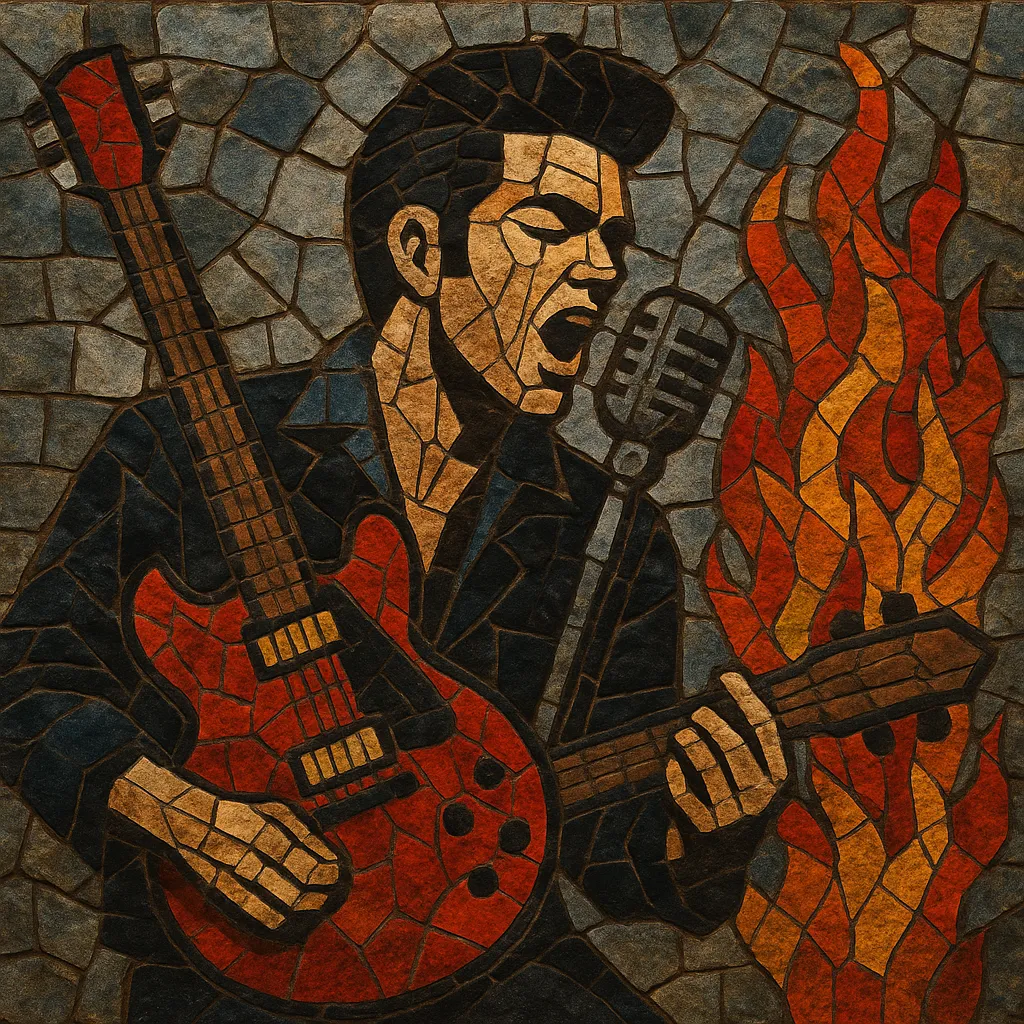
Rock and roll is a high-energy, dance-oriented popular music style that emerged in the United States in the early-to-mid 1950s. It fuses the 12‑bar blues and boogie‑woogie with the backbeat and instrumentation of rhythm & blues, the twang and storytelling of country, and the fervor of gospel.
Its hallmark sound centers on a strong backbeat (accented on beats 2 and 4), driving rhythm sections, electric guitar riffs, prominent piano or saxophone leads, and catchy, chorus-forward songwriting. Typical harmonies revolve around I–IV–V progressions, often in 12-bar form, with swung or shuffle feels and punchy turnarounds.
Culturally, rock and roll catalyzed a youth movement linked to dancing, teen identity, and social change. It bridged racial audiences by popularizing Black American musical traditions for mainstream listeners, and it laid the foundation for subsequent rock styles and much of modern pop.
Rock and roll coalesced in post–World War II America as independent labels and regional radio amplified rhythm & blues, jump blues, country boogie, and gospel-inflected vocal music. Cities like Memphis, New Orleans, Chicago, and Cleveland were hubs, with DJs such as Alan Freed popularizing the term “rock and roll.” Records like Jackie Brenston & His Delta Cats’ “Rocket 88” (1951) and Fats Domino’s early hits hinted at the new sound: a blues backbone, boogie‑woogie drive, and a hard backbeat.
By 1954–1956, the style exploded into the mainstream. Chuck Berry’s guitar-forward songwriting (“Maybellene”), Little Richard’s ecstatic vocals and piano triplets (“Tutti Frutti”), and Bill Haley & His Comets’ “Rock Around the Clock” brought the music to a national (and global) audience. Elvis Presley’s Sun and RCA recordings blended country and R&B into a charismatic template, while Jerry Lee Lewis, Bo Diddley, Buddy Holly, and Carl Perkins expanded the idiom with distinctive guitar rhythms, vocal styles, and stage presence.
Rock and roll ignited teen culture—dance crazes, fashion, and film—while challenging social norms and segregated audiences. The late 1950s saw disruptions: the payola investigations, Elvis’s military service, and the tragic 1959 plane crash that killed Buddy Holly, Ritchie Valens, and The Big Bopper. Still, the music’s DNA spread internationally and across genres.
Early rock and roll directly shaped the British beat scene (Merseybeat), surf rock, garage rock, and the broader category of rock. It informed hard rock, blues rock, power pop, punk rock, and countless substyles. Even as rock diversified, the foundational elements—backbeat, riff-driven guitars, and catchy hooks—remained central to popular music worldwide.

